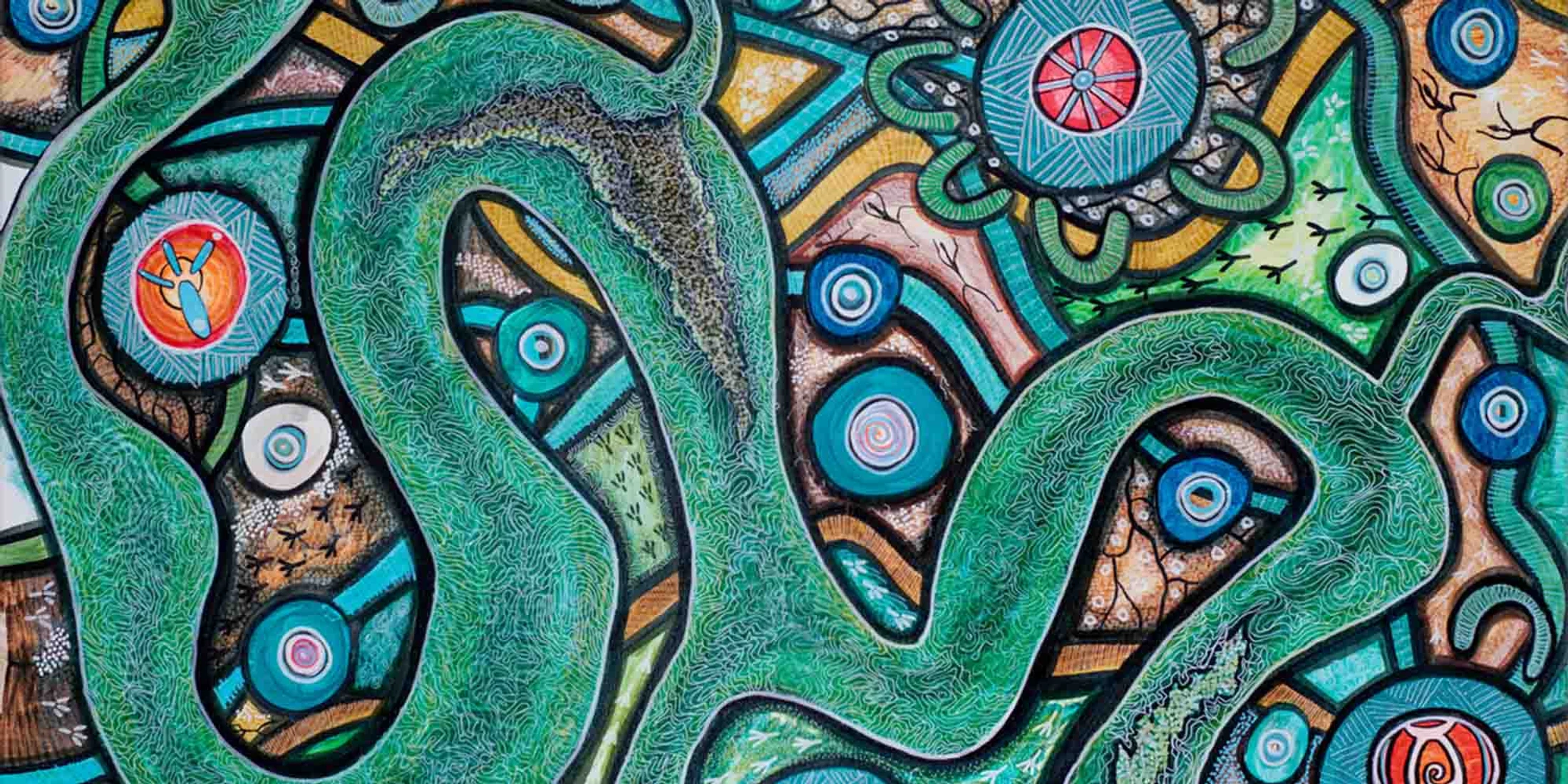
‘NGAGA’
(Hear, listen, feel)
Liz Cameron, 2019
Acrylic, ink and dye on canvas
Acknowledgement
NorthLight Anglican Church sits upon the land of the Guringai clan of the Cammeraigal Nation who were the first custodians and caretakers.
As we gather in the presence of God to worship and build our lives, we acknowledge the Aboriginal people that God placed here before us. We pay our respects to their elders, past, present and emerging, and pray that God will unite us all in a knowledge of his Son- for all things have been created through Him and for Him, whether visible or invisible - and through his gospel, all are reconciled to one another and to our maker.
As a reflection this acknowledgement, in 2019, St Matthew’s Anglican Church commissioned the above artwork from Aboriginal artist and academic Liz Cameron. It was unveiled at the start of 2020, and now takes pride of place in our entrance foyer area.
About the artist:
Professor Liz Cameron is associated with the Dharug Aboriginal Nation, located inthe Hawkesbury River area in NSW.
Liz holds the position of Chair of Indigenous Knowledges at Deakin University. She has a personal passion for the arts and sciences involving Aboriginal aspects of optimal internal and external health as a transformative process through Indigenous ways of knowing. As a practicing artist, Liz is highly awarded and has featured in various exhibitions and publications on Aboriginal making (arts) and other creative expressions.
Her website may be found at:
belanjee.com
About the work:
For thousands of years before Europeans laid claim to the land now known as the Ku-ring-gai municipality, Aboriginal people regularly passed through the heavily wooded area which was one continuous hunting ground. The Aboriginal word for the Pymble area is ‘Gurugal’. The local Lane Cove National Park contains over 40 sacred sites of shelters, cave art, engravings, middens and axe grinding grooves. Kangaroos, wallaaby and wombat tracks are eteched into many rock faces.
The storyline of this artwork expresses what once was; it is a memory of the lands surrounding West Pymble and features the Lane Cove river. The delicate patterning within the water highlights the movement of the tides, as the water was never still and held abundant wildlife. To tell the story of the past, wildlife tracks of kangaroos, wombats, magpies and lizards are embedded throughout. Concentric circles depict the gathering of people within cultural places, highlighting the campires where they would congregate to exchange gifts and stories. Large centralised circles portray the different Aboriginal Nations that would gather to exchange foods, meet old family members and celebrate ceremonies. Aboriginal motifs related to the Dharug Nation are scattered within the artwork and illustrate aspects of the cosmos, speciral sites and water holes of the surrounding areas. Walking tracks permeate throughout the artwork to pay homage to the people who walked before us.
Keeping Country (land) healthy keeps people healthy - it is important to ensure the bushlands surrounding Pymble are kept clean and revitalised for future generations.
